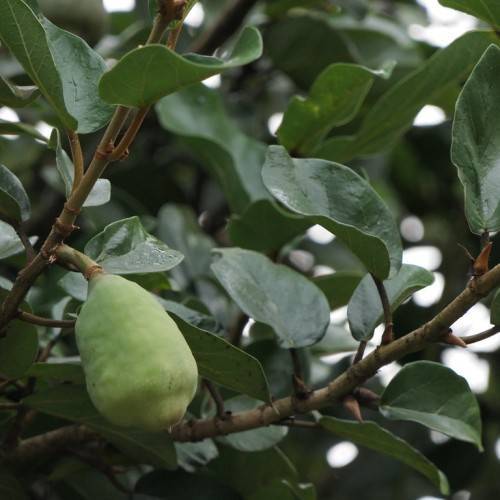
climbing fig
Ficus pumila
Cycle:
Perennial
Watering:
Frequent
Hardiness Zone:
9 - 11
Flowers:
Flowers
Sun:
part sun/part shade
Fruits:
Fruits Ready In
Edible:
Yes
Leaf:
Yes
Growth Rate:
High
Maintenance:
Low
Drought Tolerant:
Yes
Invasive:
Yes
Indoors:
Yes
Care Level:
Medium
watering
Climbing figs (Ficus pumila) need regular watering to stay healthy and maintain their attractive aesthetic. As with other species of ficus, climbing figs generally prefer consistently moist soil. Water every 1-2 days during the spring and summer, and about every 3-4 days during the fall and winter. In particularly hot and dry climates, the plant may need to be watered more frequently, while in temperate climates, it can be watered on a more infrequent schedule. Soil moisture should be tested to determine the proper watering schedule. If the soil feels dry to the touch 1-2 inches below the surface, the plant should be watered. For best results, use tepid water and avoid overwatering to prevent root rot.
sunlight
Climbing fig or Ficus pumila is a fast-growing, evergreen, climbing vine that grows in full sun to partial shade. To ensure optimal health, it should be given at least 4 to 6 hours of sunlight each day. The best times for providing sunlight are early in the day, when the sun is highest in the sky and not as hot. Avoid the peak sun hours, particularly in summer, as exposure to intense sunlight may scorch the leaves.
pruning
Climbing fig (Ficus pumila) should be pruned twice per year, in early spring and mid-summer. Prune lightly during the spring, removing any unhealthy or dead branches. During the mid-summer pruning, cut back more aggressively, leaving about 2-thirds of the previous growth. Leave at least 3 leaves on each stem after pruning for better regrowth. Avoid pruning during the winter season, when the plant is dormant, as this will slow down the regrowth process.
